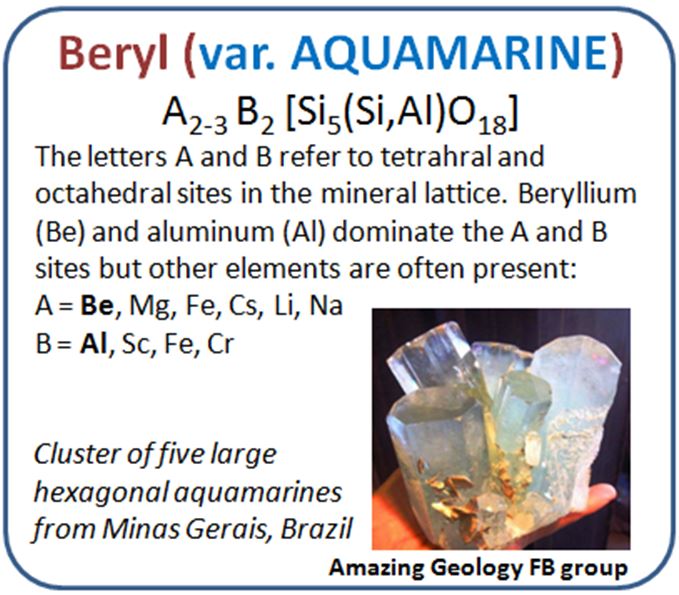Written for the March 2016 Wayne County Gem and Mineral Club newsletter
The mineral beryl is hard and can sparkle with exceptional clarity and wondrous color when free of inclusions and defects, clearly justifying its lofty gemstone status. In fact, not just one gemstone, but several depending on the color imparted by trace amounts of iron, chromium, manganese and other transition elements substituting into the crystal lattice. Aquamarine, emerald, morganite, and heliodor are all gemstones of the mineral beryl. But it is sky blue variety that has our special attention this month as aquamarine is the March birthstone.
Beryl is a beryllium-bearing silicate mineral. Specifically, the hexagonal mineral is a cyclosilicate, characterized by stacked rings of six SiO4 tetrahedra which are linked by BeO4 tetrahedra and AlO6 octahedra. All bonds are strong and the mineral is very hard (7.5-8 on Moh’s scale).
A mere 0.1 to 0.3% of ferric iron (Fe+2) substituting into the octahedral site (the B site) is all it takes to impart the wonderful sky blue color characteristic of aquamarine to a beryl crystal. Often though, an equally small amount of ferrous iron (Fe+3) enters into that same site. We have all seen greenish blue aquamarine, even tending to yellow green. It is this Fe+3 ion in the lattice that imparts the lesser desirable greenish color. Interestingly, heat treatments can be used to reduce the Fe+3 to Fe+2 effectively limiting or even eliminating the yellowish tint. This is typically done after the stone is cut (Lauf, 2011).
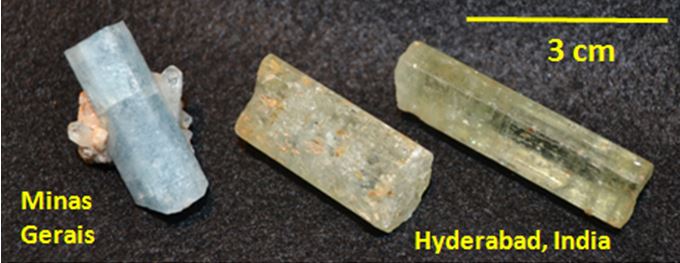
Most large aquamarines grow in cavities in granites and granite pegmatites. WCGMC members who have ventured north on our Ontario trips are fond of collecting beryl at the Beryl Pit in Quadville, Ontario. However, the specimens we bring back from Canada are not gems by any stretch of the term or the imagination, and probably do not qualify as aquamarine either, but they are found in association with tourmaline, feldspar, quartz, and mica due to their occurrence in a complex pegmatite. And they often display the perfect hexagonal, basally terminated form associated with the gemstone.
The world’s greatest most prolific source of gem aquamarine and also the largest source of fine mineral specimens is the State of Minas Gerais in southeast Brazil, notably the many mines of the Jequitinhonha Valley. However, arguably the highest quality aquamarine gemstones are recovered from northern mountains of Pakistan.
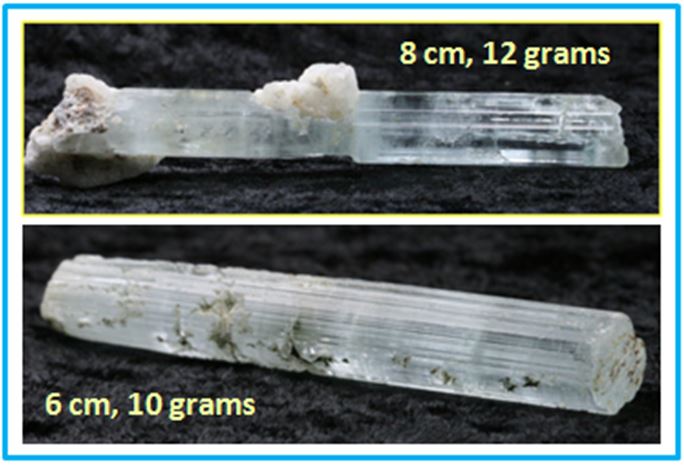
In the U.S. the pegmatites hidden high on Mount Antero and made famous by “The Prospectors” TV show contain some brilliant aquamarine as do several sites in the mountain ranges of southern California. But those of us in the northeast do not have to go that far to find aquamarine. Some fine gems and certainly some very nice mineral specimen aquamarines have been found in the pegmatites of several New England states. The list of classic pegmatite sites bearing aquamarine (or gemmy beryl) from ME, NH, MA, and CT is long and filled with historical accounts of locations. Although these locations have not been forgotten, many are now inaccessible for collecting.
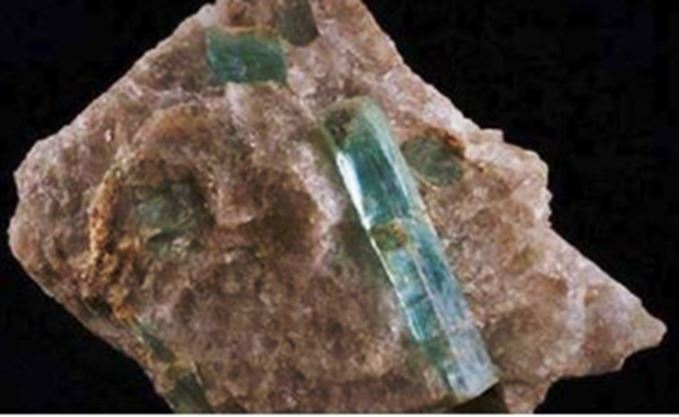
There are even a few aquamarines in New York State. The most famous are probably a set of 7 gems cut from a single stone found in the early 20th century in Manhattan. 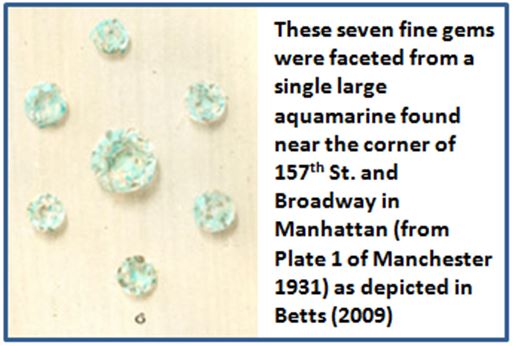
References:
Betts, J. H., 2009, A review of the history of mining, mineral collecting and minerals found in the five bouroughs of New York City, Rocks and Minerals, V. 84, #3, p 204-252.
Lauf, R. J., 2011, Collector’s Guide to the Beryl Group, Schiller Publishing, 93 p.
Manchester, J. G., 1931, The Minerals of New York City and its Environs, New York Mineralogical Club, NY
Minerals.net webpage, aquamarine page, http://www.minerals.net/mineral/aquamarine.aspx

